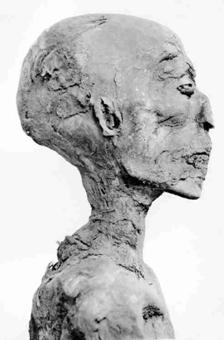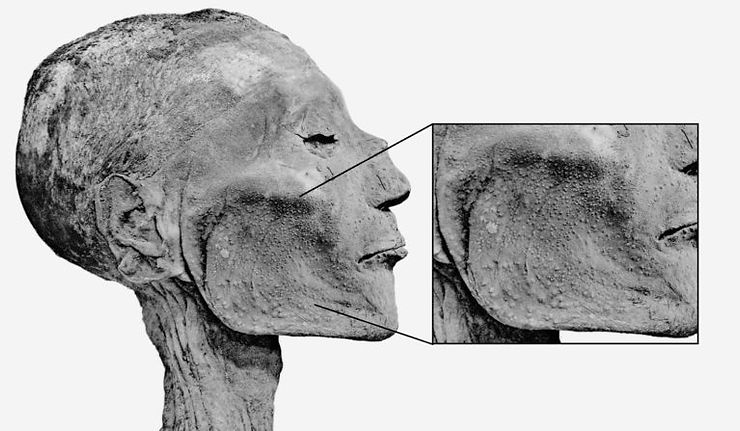The discovery of King Tutankhamun’s tomb in 1922 by Howard Carter was a watershed moment in archaeology. Hidden for over 3,000 years in the Valley of the Kings, the boy pharaoh’s resting place was a treasure trove of history, art, and mystery. However, amidst the gold-laden tomb and intricate artifacts lay the mummified remains of King Tutankhamun himself—a relic of ancient Egypt that would become a focal point of intense scientific scrutiny and, unfortunately, a symbol of the destructive practices of early 20th-century archaeology.
This blog delves into the controversial treatment of King Tut’s mummy, analyzing the methods used to examine it, the cultural and historical implications, and the lessons learned from this extraordinary yet tragic chapter in the history of archaeology.
A Sticky Situation: The Challenges of Tutankhamun’s Mummy
When Carter and his team opened Tutankhamun’s sarcophagus, they encountered an unexpected problem: the embalming resins and unguents used during mummification had hardened over the centuries, effectively gluing the mummy to the golden coffin. This wasn’t entirely unusual; ancient Egyptian embalmers often used copious amounts of resin to preserve royal remains. However, in Tutankhamun’s case, the heat of the tomb, possibly exacerbated by candlelight during rituals, had baked the resins solid.
Attempts to separate the mummy using traditional unwrapping techniques failed, leaving Carter and his team at a crossroads. Faced with the imperative to examine the body and retrieve burial artifacts like jewelry and amulets, the team made the decision to dismantle the mummy—a choice that would have severe consequences.

The Disarticulation of a Pharaoh
To extract the body from its coffin, Carter’s team resorted to invasive techniques that horrify modern archaeologists. The torso was severed at the hips to separate the pelvis and legs, and the arms were disarticulated at the shoulders, elbows, and wrists to access bracelets and other items hidden beneath the wrappings. Each body part was treated with hot paraffin wax to stabilize it during removal.
The head, which was fused to the iconic golden death mask, was detached using hot knives. This allowed Carter to retrieve the mask but left the mummy permanently disfigured. Additionally, to examine the pharaoh’s teeth, an incision was made around the inner jaw and throat—damage that was later repaired with resin.
This thorough disassembly of King Tutankhamun’s body allowed anatomists to study the bones, revealing insights into the pharaoh’s age, health, and physical characteristics. However, the process left the mummy in a severely damaged state, raising ethical questions about the balance between scientific discovery and preservation.

What Did We Learn from Tutankhamun’s Mummy?
Despite the invasive nature of the examination, the disarticulation yielded valuable information:
- Age and Health:
King Tutankhamun was estimated to be around 19 years old at the time of his death. His remains revealed a slight frame, a pronounced overbite, and potential signs of genetic disorders, likely due to inbreeding among Egypt’s royal families. - Cause of Death:
Initial theories speculated that the young pharaoh might have died from a chariot accident or a blow to the head. However, further studies suggested that he suffered from malaria and a degenerative bone condition, which, combined with a leg fracture, could have led to his death. - Artifacts Hidden in Wrappings:
The dismantling allowed Carter’s team to recover numerous jewelry pieces and amulets, each intricately designed to protect the pharaoh in the afterlife. These items have provided insights into the religious and artistic practices of the New Kingdom period.

Cultural and Ethical Implications
The treatment of Tutankhamun’s mummy highlights the often-destructive nature of early archaeological methods. In their eagerness to uncover history, Carter’s team prioritized immediate gains over long-term preservation, a practice common at the time but heavily criticized today.
For ancient Egyptians, the body was sacred—especially for a pharaoh. Their belief in the afterlife depended on the preservation of the body as a vessel for the soul. The desecration of Tutankhamun’s remains would have been seen as a grave offense to these beliefs.
Modern Archaeology: A Shift in Perspective
Today, advances in technology allow archaeologists to study mummies non-invasively. CT scans, X-rays, and DNA analysis provide detailed insights into ancient remains without damaging them. For example, recent studies of Tutankhamun’s mummy have been conducted using advanced imaging techniques, revealing new details about his lineage and health while preserving what remains of his body.
The mistakes made during the examination of Tutankhamun’s mummy serve as a cautionary tale. They underscore the importance of ethical considerations in archaeology, balancing the thirst for knowledge with respect for cultural heritage and human remains.
A Legacy Both Golden and Fragile
King Tutankhamun’s tomb continues to captivate the world. The treasures it held—the golden mask, intricately carved statues, and jewelry—have become symbols of ancient Egypt’s splendor. Yet the story of his mummy reminds us that the pursuit of knowledge should never come at the expense of preservation.
As we marvel at the boy king’s legacy, we are also reminded of the responsibility archaeologists and historians bear in ensuring that the past is not only uncovered but respected and protected for future generations. The tale of Tutankhamun is not just one of riches but a lesson in humility, ethics, and the enduring power of history to teach us about ourselves.
